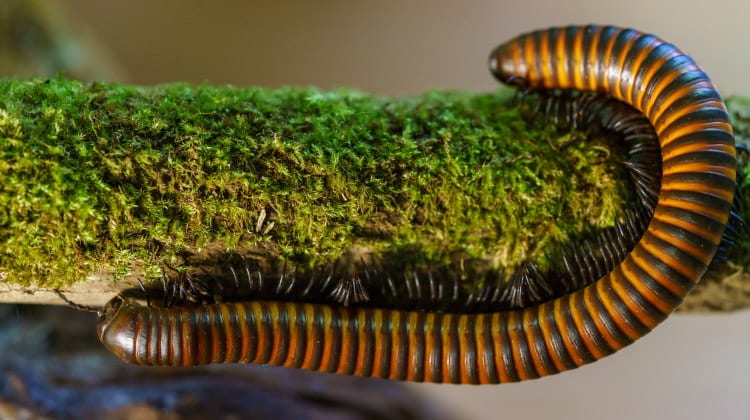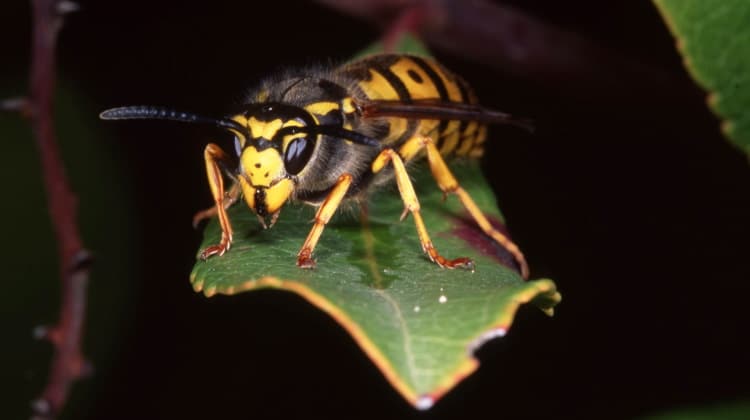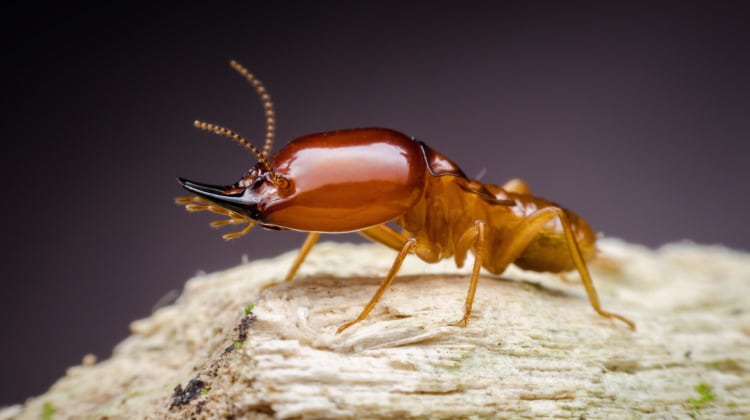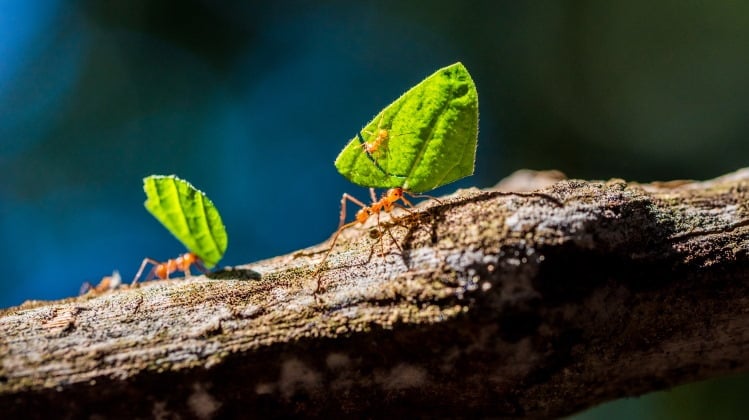Centipedes 101: The Incredible World Of Class Chilopoda
Centipedes (Class Chilopoda) are an amazing group of animals. Taxonomically, they are most commonly considered to be part of the Myriapoda – along with the Millipedes (Diplopoda), Symphyla and Pauropoda.
However, there is still much to be learned about the relatedness of all these arthropod groups; not only to each other but also to the Insecta and the more basal Onycophora. There are about 2,500 named species in the world.
All Centipedes have numerous body segments with one pair of legs per segment. The number of leg bearing segments, and hence pairs of legs, ranges from 15 to 177 (but is always an odd number).
The legs on the first body segment are modified into venom bearing fangs that Centipede use to hunt their food.
The body segments are flattened and some or all of them bear spiracles for breathing; the actual number varies between orders. Centipedes generally have a single claw at the end of each leg which they walk or run on (i.e. they are digitigrade), except the fast moving Scutigera which have a multi-articulate foot with numerous hairs to help them get a better grip on the ground (i.e. they are plantigrade).
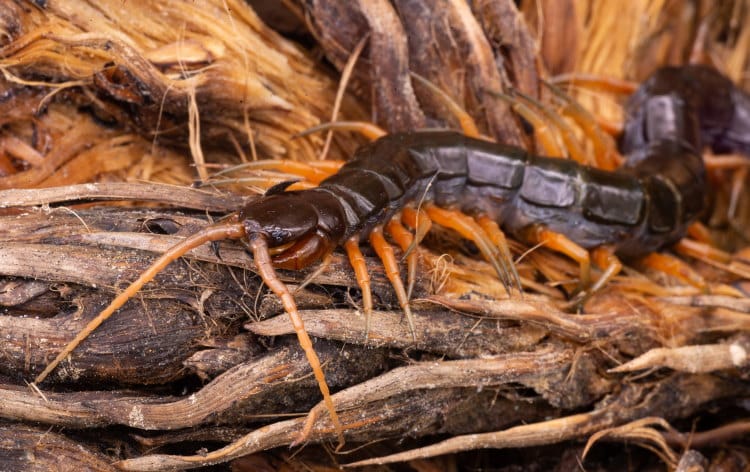
Centipedes have no waxy waterproofing layer on their cuticle, hence they tend to be limited in terms of distribution to damp or moist situations.
They are generally found in leaf litter in woods and forests or in rotting timber. Many species are cavenicolous (i.e. live in caves); a number of species can be found along the sea shore under damp seaweed and other detritus; and several species of the Geophilomorpha are completely marine, i.e. Hydroschendyla submarina from Bermuda.
Most Centipedes have short legs which are good for pushing themselves through the soil or into the leaf litter or rotten wood, however the Scutigeromorpha which have long legs which are better for moving quickly.
All Centipedes are primarily nocturnal, or below ground hunters, and are shy of the light; though some species of Scutigeromorpha are seen actively at times in daylight as well. All Centipedes are also primarily carnivorous, however some of the Geophilomorpha will eat plant material as well and can sometimes occur in such large numbers as to be considered a pest.
The larger Scolopendrids may take small vertebrates including Mammals, Birds and Reptiles.
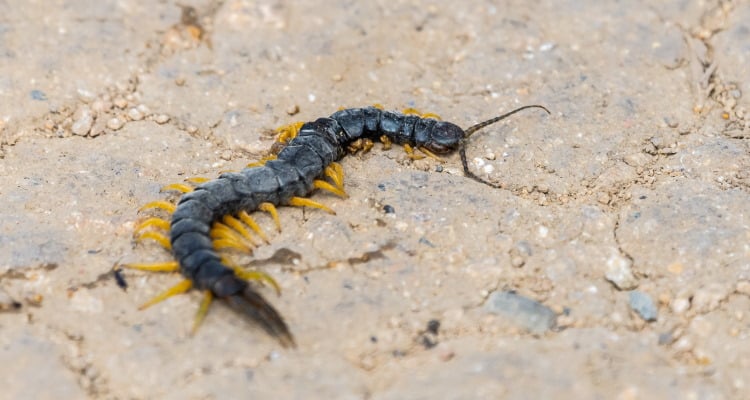
Scolpendrids, at least in my observations, will also happily scavenge from relatively fresh, dead animal material. In captivity, I have fed them on raw chicken and pork as well as on cooked prawns. Though some species are easily kept in captivity, their basic carnivorous lifestyle can lead to cannibalism if many are kept together; Geophilids are notoriously difficult to keep in captivity.
Centipedes appear to suffer from relatively few parasites with less than 7% having any parasites at all in one study, the culprits mainly being Nematodes and Tachinid flies.
Breeding Chilopoda
Male Chilopoda spin a small web onto which they deposit a spermatophore for the female to take up. Sometimes there is a courtship dance, sometimes the males just leave them for the females to find. In temperate areas egg laying occurs in Spring and Summer, but in subtropical and tropical areas there appears to be little seasonality to Centipede breeding.
The Lithobiomorpha and Scutigeromorpha lay their eggs singly in holes in the soil. The female fills the hole in on the egg and leaves it. The young usually hatch with only 7 pairs of legs and gain the rest in successive moults.
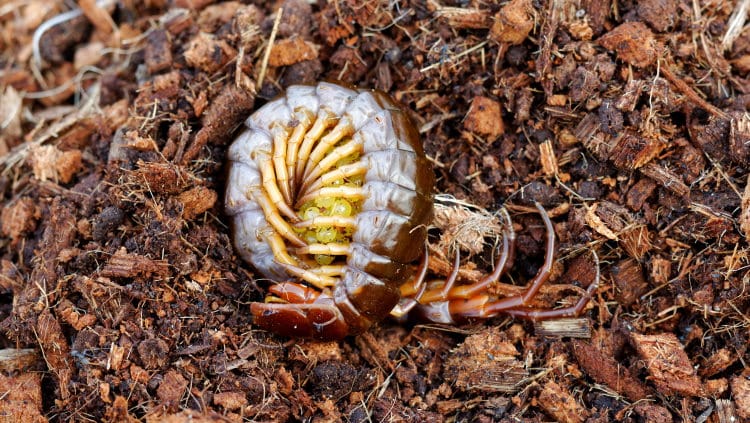
Scutigera coleoptera the American House Centipede hatches with only 4 pairs of legs and in successive moults has 5,7,9,11,15,15,15 and 15 before becoming a sexually mature adult. It takes about 3 years for S. coleoptera to achieve adulthood.
However, like Millipedes, Centipedes are relatively long lived when compared to their insect cousins – the European Lithobius forficatus can live for 5-6 years.
Females of Geophilomorphapha and Scolopendromorpha show far more parental care. The eggs, 15 – 60 in number, are laid in a nest in the soil or in rotten wood; the female stays with the eggs, guarding and licking them to protect them from fungi.
The female in some species stays with the young after they have hatched, guarding them until they are ready to leave. If disturbed, the females tend to either abandon the eggs or young or to eat them; abandoned eggs tend to fall prey to fungi rapidly – thus breeding is difficult to study in these species.
The Class Chilopoda is divided into 5 orders, which are laid out below. In some taxonomic schemes, Chilopoda is part of the Subphyllum Myriapoda.
Geophilomorpha
These are long, worm like species adapted to burrowing in the soil. They have 31 to 177 pairs of legs, 14 segments in the antennae, and a spiracle on every segment except the first and last.
Some species such as the North American Orya barbarica may reach 15 – 17 cm (6 – 7 inches) in length, however most species are smaller such as the European Haplophilus subterraneus which is about 3 -5 cm (2 – 3 inches) long.
Scolopendromorpha
This is a large order within class Chilopoda, all of which have less than 24 pairs of legs and 17 – 30 antennal segments. This order contains the genus Scolopendra which includes S. gigantea which can be over 30 cm (12 inches) in length.
S. galapagoensis is reported to reach 40cm or 17 ins in length – and is probably the largest species in the world.
Many of the larger Scolopendrids are colourful and venomous, some of them dangerously so – and care should be taken to avoid being bitten. S. heros, the largest species in the USA, is not scientifically known to exceed 20 cm or 8 ins in length. Far larger specimens are reported in the old literature, but without specimens to back up these reports they have to be considered hearsay. It is a well studied species with several distinct color morphs
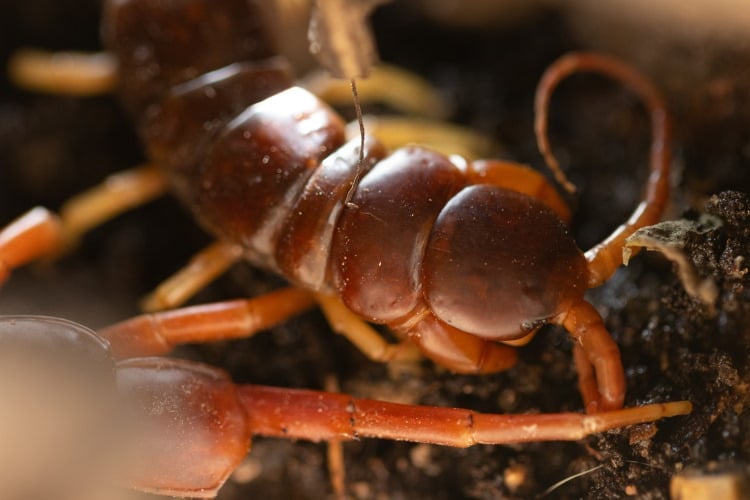
The terminal legs are often modified; in the African genus Alipes they are flattened and expanded and are used in stridulation. In the S. American genus Newportia, they are antennae like in form and function while in the genus Theotops they bear an enlarged claw and are used to hold onto prey.
Some species will autotomise (let fall off deliberately) some of their legs to distract potential predators. The order as a whole is more frequent in the topics than in temperate regions. The young often have a different color/pattern than the adults
Craterostigmomorpha
There is only one genus (Craterostigma) in this order, which only occurs in Australia and which appears to represent a halfway stage between the Scolopendrids and the Lithobids. They have 15 pairs of legs and only 7 sets of spiracles.
Lithobiomorpha
This a relatively successful group of medium sized to smallish Centipedes found commonly in temperate as well as tropical areas. They have 20 – 50 antennal segments, 15 pairs of legs and only 6 or 7 pairs of spiracles.
Scutigeromorpha
These are all fast moving species which have 15 pairs of long legs and spiracles on the first 7 segments only.
They are the only group of Centipedes to have compound eyes, all the others have either simple eyes or none at all.
They are above ground hunters and are therefore more likely to be seen in those countries where they occur; there are none in the UK. Scutigera longicornis from India at about 5 -7 cm (2 -3 inches) is one of the largest species known.
Like the Scolopendrids they can autotomise their legs when under threat from predators. In some cases these legs continue to stridulate (make a noise), thus distracting the predator from the whole animal.
What Next?
Well, I hope this has been an interesting introduction to the centipedes of class chilopoda!
Perhaps now you’d like to learn a little about the bee wolf.
Bibliography
- Cloudsley-Thompson, J.L. (1968). Spiders, Scorpions, Centipedes and Mites, Pergamon Press; Oxford.
- E. H. Eason, (1964). Centipedes of the British Isles, Frederick Warne,
- Lawrence, R.F. (1984). The Centipedes and Millipedes of Africa, A guide. A. A. Balkema; Capetown, Rotterdam.

